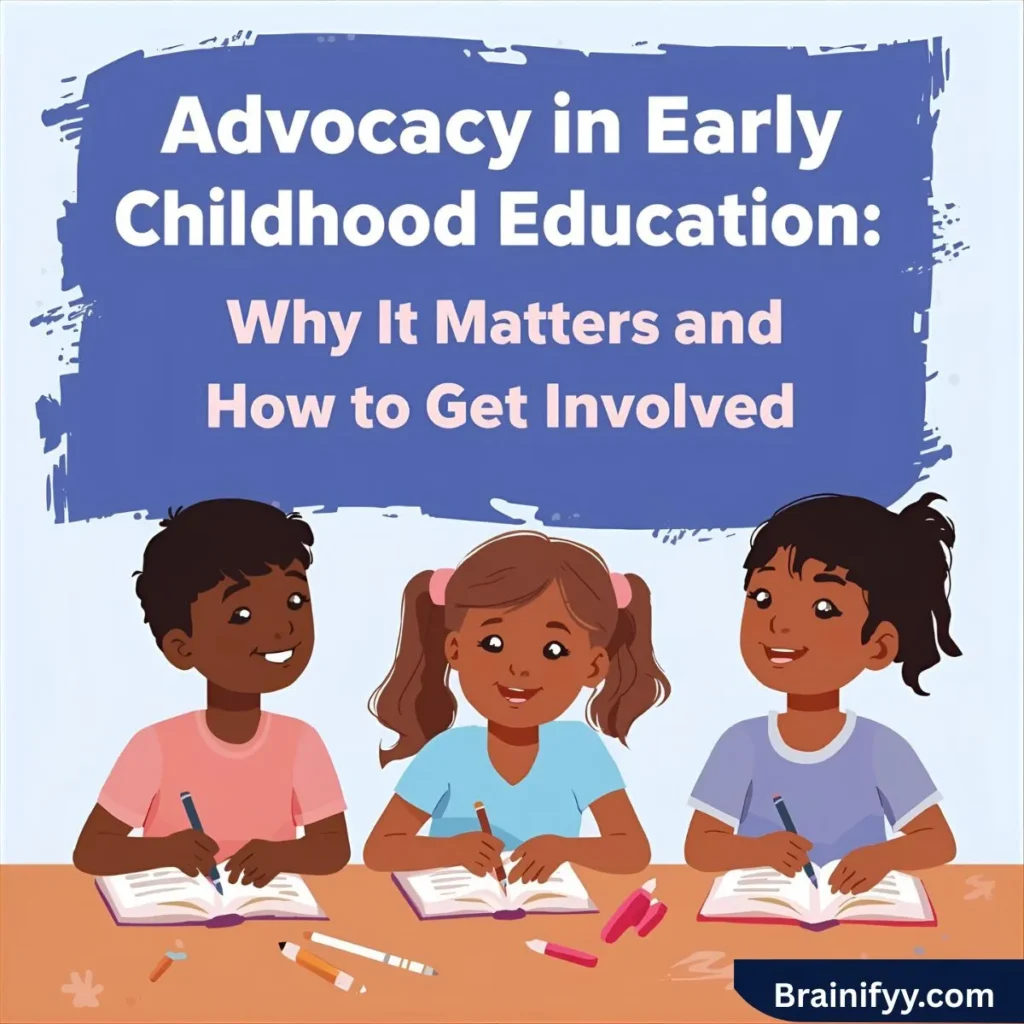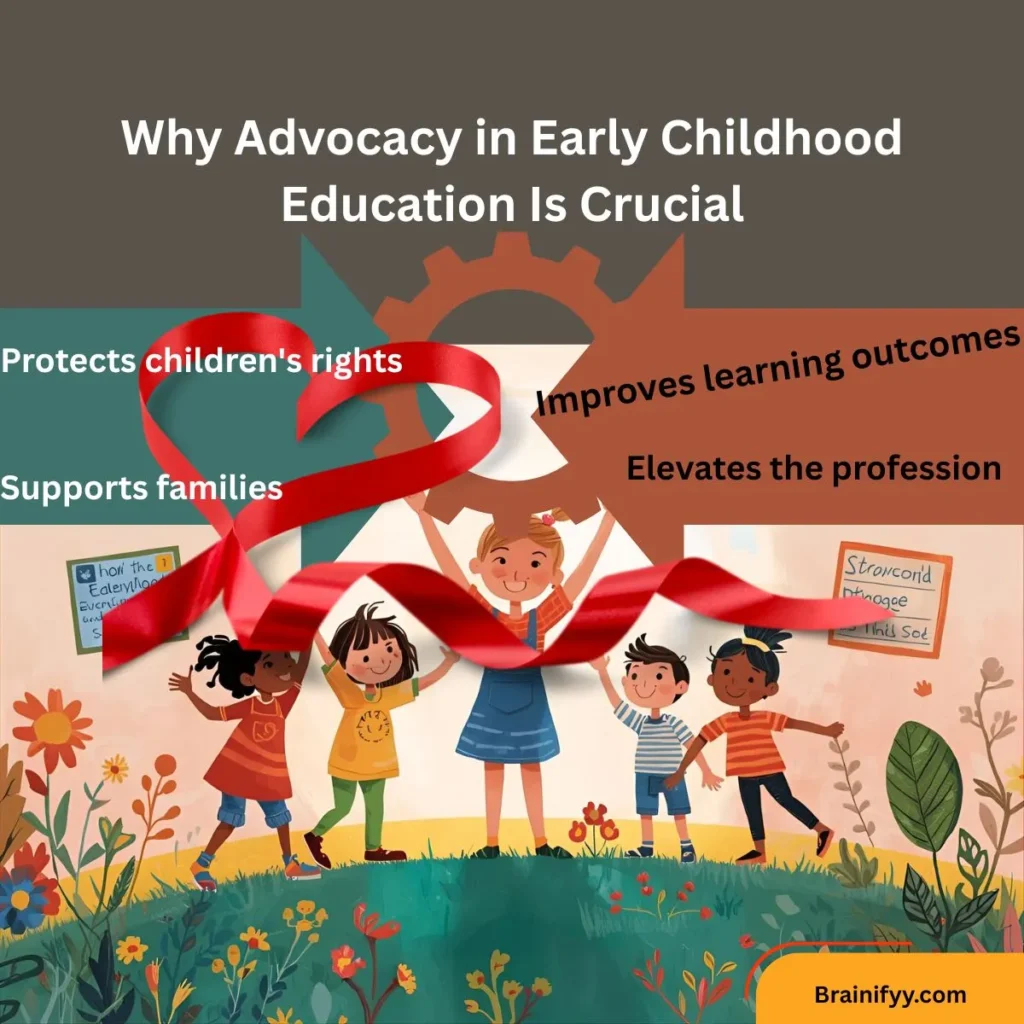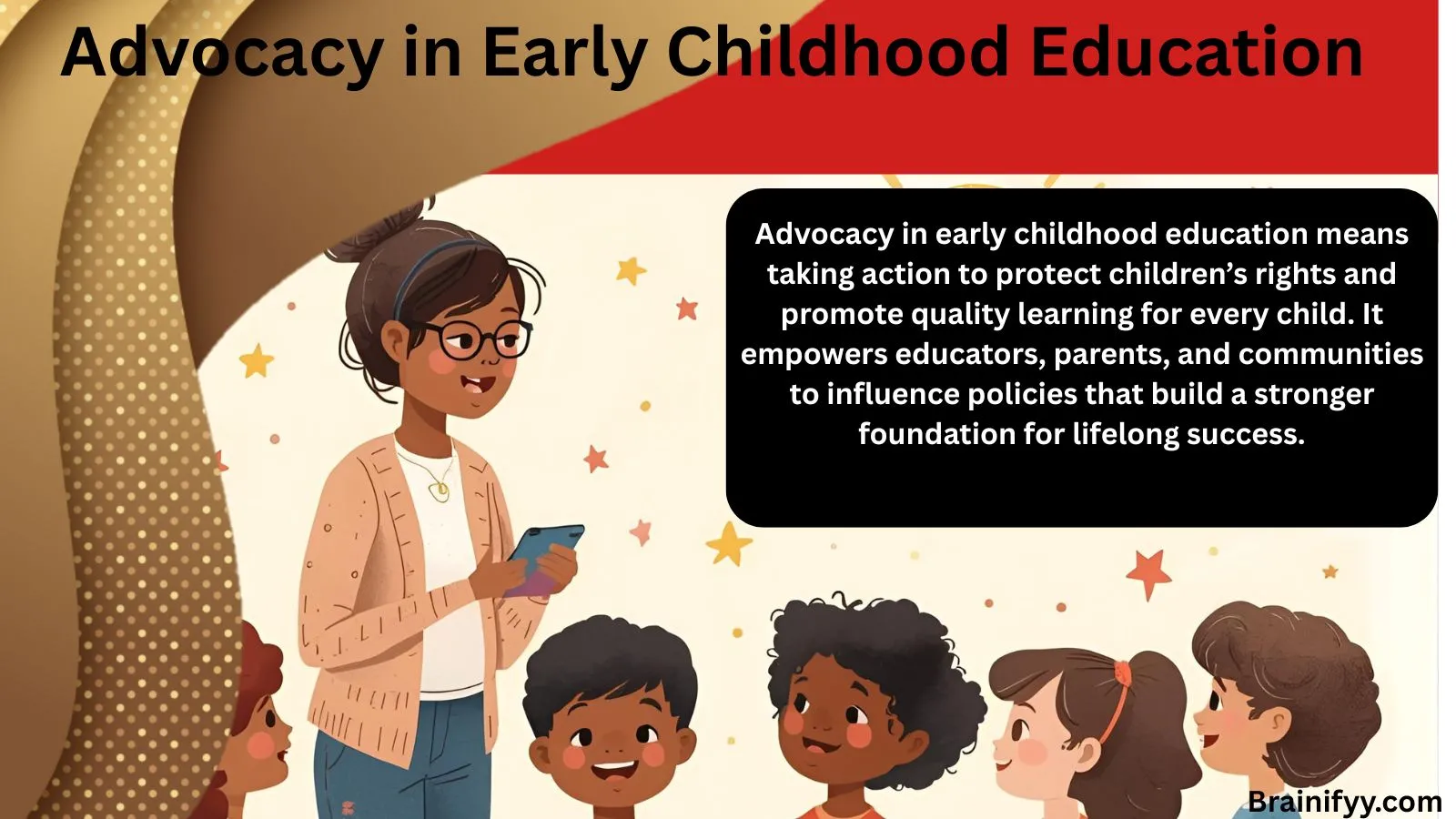Even before they can speak well, every child should have a voice. Speaking up, taking action, and bringing about change are all part of advocacy in early childhood education, which aims to support the success of young children, families, and teachers. However, a lot of individuals look for this term because they want to know exactly what advocacy means in this context. How can I go about doing it? There is uncertainty about whether it needs to be political, how formal or informal it may be, and how to strike a balance between activism and day-to-day care.
In this article, you’ll find a quick answer, a deeper historical view, common errors to avoid, real-world examples, and advice on spelling and usage. You’ll also get help deciding whether to use “advocacy” (which is standard) or any variant. By the end, you’ll have both a clear concept and practical tips you can apply in emails, policy work, social media, or classroom life.
Advocacy in Early Childhood Education: Why It Matters and How to Get Involved

Advocacy in early childhood education means speaking up for the rights, needs, and quality learning of young children. It matters because early education builds the foundation for lifelong success, and every child deserves equal opportunities. By advocating, educators, parents, and communities can influence policies, funding, and support systems. Getting involved can be as simple as sharing awareness, joining advocacy groups, or writing to local decision-makers. Together, these actions strengthen early learning programs and shape a better future for all children.
What Is Advocacy in Early Childhood Education?
Advocacy in early childhood education (ECE) refers to the active support and promotion of policies, practices, and resources that benefit young children, their families, and educators. Whether it’s pushing for better funding, inclusive curricula, or professional development, advocacy ensures that the voices of our youngest learners are heard and respected.
Why Advocacy in Early Childhood Education Is Crucial

- Protects children’s rights: Advocates help ensure access to quality education, healthcare, and safe environments.
- Improves learning outcomes: Advocacy leads to better teacher training, smaller class sizes, and enriched learning environments.
- Supports families: By influencing policies, advocates can secure parental leave, childcare subsidies, and community support systems.
- Elevates the profession: Advocacy raises awareness about the value of early childhood educators and pushes for fair wages and recognition.
Types of Advocacy in Early Childhood Education
| Type of Advocacy | Description |
|---|---|
| Individual Advocacy | One-on-one support for a child or family navigating educational systems. |
| Community Advocacy | Mobilizing local stakeholders to address issues like access or equity. |
| Policy Advocacy | Engaging with lawmakers to influence legislation and funding decisions. |
| Professional Advocacy | Promoting the value and needs of early childhood educators. |
How Educators Can Be Effective Advocates
- Stay Informed: Understand current ECE policies, research, and trends.
- Build Relationships: Connect with parents, administrators, and policymakers.
- Use Your Voice: Write op-eds, speak at school board meetings, or join advocacy groups.
- Document Impact: Share stories and data that highlight the importance of early learning.
- Lead by Example: Model inclusive, developmentally appropriate practices in your classroom.
Advocacy in Early Childhood Education – Quick Answer
Advocacy in early childhood education means taking actions—big or small—to support, protect, and promote the rights, needs, and well-being of young children, their families, and educators. For example:
- A preschool teacher writes a letter to a local council urging more funding for classroom resources.
- A parent group campaigns for lower child-care rates in their city.
- An educator speaks to the media about the importance of early learning.
- A center leader changes internal policy to provide better support for staff, thereby advocating professionally.
Thus, advocacy isn’t always grand or political—it can be everyday conversations or small policy efforts.
The Origin of Advocacy in Early Childhood Education
The word “advocacy” derives from the Latin advocare, meaning “to call to” or “to call for aid.” Over time, it came to mean speaking on behalf of someone else or supporting a cause.
In education, advocacy has a long history tied to social reform movements—first for broader schooling access, and later for vulnerable groups (including children, people with disabilities, and marginalized communities). In the context of early childhood, the phrase “advocacy in early childhood education” has grown as awareness of early brain development and the long-term benefits of quality early learning has spread.
Because the phrase combines a general English word (advocacy) with a domain (early childhood education), variations sometimes arise (e.g. “advocacy in early childhood care and education,” or abbreviations like “ECE advocacy”). However, “advocacy in early childhood education” is the clearest and most direct form.
British English vs American English Spelling
In fact, there is no major spelling difference between British English and American English for the word advocacy or education. Both varieties spell it as advocacy and education.
However, other related words might show variation (e.g. organisation vs organization). To illustrate general British vs American spelling differences, here is a table of some common variants:
| British English | American English |
|---|---|
| organisation | organization |
| recognise | recognize |
| centre | center |
| colour | color |
| defence | defense |
Because advocacy is spelled the same in both dialects, you won’t need to worry about different forms of that specific keyword.
Which Spelling Should You Use?
Since advocacy in early childhood education is spelled the same in British and American English, the question of which spelling to use is simpler: just use it as is.
- If you’re writing for a US audience (e.g. US educators, policymakers), use “advocacy in early childhood education” and other American standards (like organization, center, recognize).
- If you’re writing for the UK, Commonwealth countries, or global audiences, you still use “advocacy in early childhood education” unchanged, but adopt British standards elsewhere (e.g. organisation, centre, recognise).
- If your audience is international, you can stick to a neutral style—advocacy in early childhood education and be consistent, but choose either American or British for other words, and perhaps note your chosen style in a style sheet.
Common Mistakes with Advocacy in Early Childhood Education
Here are frequent errors and how to correct them:
- Too broad or vague language
Wrong: “We advocate for children all the time.”
Better: “We advocate for better funding, better teacher pay, and more inclusive classrooms for young children.” - Forgetting to back advocacy with evidence
Just saying “it’s needed” is weak. Use data, research, stories. - Confusing advocacy with lobbying
Advocacy is broader; lobbying is trying to influence specific legislation. - Overusing jargon
Phrases like “macro systems,” “policy levers,” without explanation can confuse audiences. - Neglecting incremental or small acts
Many think advocacy must be grand scale. In contrast, short emails, social media posts, or classroom conversations are valid.
Advocacy in Early Childhood Education in Everyday Examples
- Email to a policymaker (formal):
“Dear Council Member Smith, I write to you as an early childhood educator. I am advocating for increased funding for local preschools. Research shows that every dollar spent on early learning yields long-term social and economic returns.” - News headline:
“Advocacy in Early Childhood Education Gains Momentum in Rural Districts” - Social media post (informal):
“Today I joined a campaign — because advocacy in early childhood education truly matters! So, let’s push for better teacher pay and more inclusive programs. Together, we can make a difference. #ECE #Advocacy” - Internal memo at a preschool center:
“Team, moving forward, we should adopt policy advocacy. Specifically, let’s write to the local board to support extending preschool hours. After all, this initiative is part of our broader commitment to advocacy in early childhood education from within our center.”
Advocacy in Early Childhood Education – Google Trends & Usage Data
When we look at Google Trends data, “advocacy in early childhood education” sees relatively modest volume but consistent interest in countries like the United States, Australia, Canada, and the United Kingdom (especially where early education is a policy discussion). In practice:
- In the US and Canada, advocacy is often tied to funding debates, preschool expansion, teacher certification, and child-care subsidies.
- In Australia and the UK, advocacy often links with quality frameworks, regulation, and care standards.
- Usage is higher during policy cycles, when governments propose budgets or reforms in education or child care.
This phrase is more niche compared to broader terms like “early childhood education,” but it’s important in professional, academic, and policy contexts.
Keyword Variations Comparison Table
| Variation | Meaning / Use | Notes |
|---|---|---|
| advocacy in early childhood education | standard, direct form | best overall |
| early childhood advocacy | shorter form, common in practice | emphasis on advocacy role |
| advocacy in early childhood care and education | more formal, inclusive | used in some policy documents |
| ECE advocacy | abbreviation, informal | useful in internal or field writing |
| advocacy for early childhood | slightly different word order | sometimes acceptable |
FAQs
1. What is the difference between advocacy and activism in early childhood education?
Advocacy works within systems (policy, communication, awareness), while activism may include protest or disruption to demand change. Oxford Bibliographies+1
2. Is advocacy in early childhood education legal for teachers?
Yes. Teachers and citizens generally have rights to advocate, though lobbying rules differ. Use personal communication channels when contacting public officials. Giving Compass+2Start Early+2
3. How do I start advocating if I’m new to early childhood education?
Begin small: share articles, talk to parents, join an advocacy group, write a letter to a decision-maker. Penn State Extension+2Start Early+2
4. Can advocacy affect policies at the state or national level?
Yes. Change often begins locally but can scale if groups mobilize, provide evidence, and influence legislators. Giving Compass+2pressbooks.atlanticoer-relatlantique.ca+2
5. What mistakes should I avoid when advocating for young children?
Don’t make vague asks; don’t ignore evidence; don’t alienate allies; don’t assume people know the issue. Use clear language and respect your audience.
6. Is “advocacy” spelled differently in British English?
No—it remains advocacy in both British and American English.
7. Can non-educators engage in advocacy in early childhood education?
Absolutely. Parents, community leaders, NGOs, and policymakers all have roles in advocacy.
Conclusion
In sum, advocacy in early childhood education means taking purposeful action to support children, families, and educators. Whether through simple daily conversations or large-scale policy efforts, advocacy bridges care and change. The keyword is spelled the same in both British and American English, so focus instead on clarity and consistency. Watch out for vague language or unsupported claims, and remember—even small acts count. Use your voice in emails, social media, professional memos, or dialogues with decision-makers. When you do, your work helps ensure early childhood gets the attention, respect, and resources it needs. Let this guide be your starting point—and then build your advocacy practice over time with confidence.


Leave a Reply